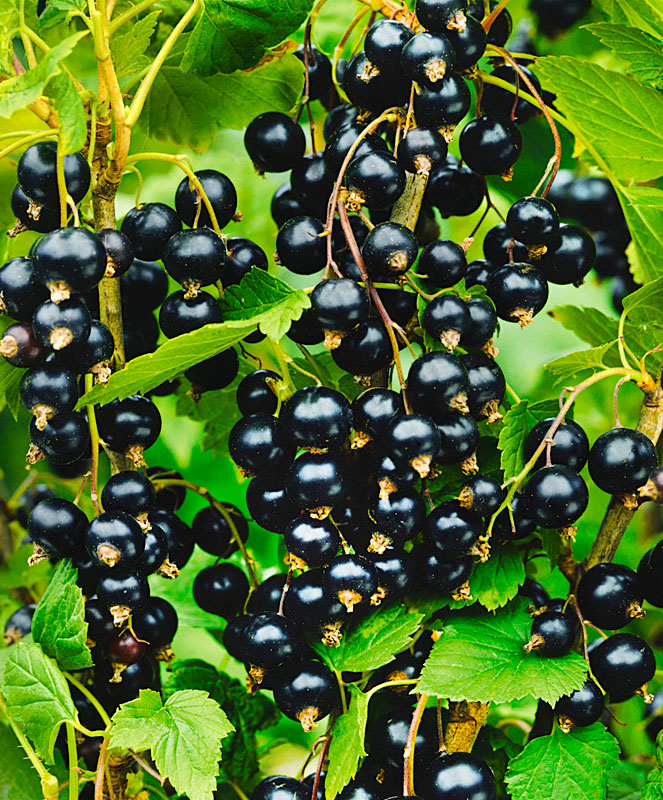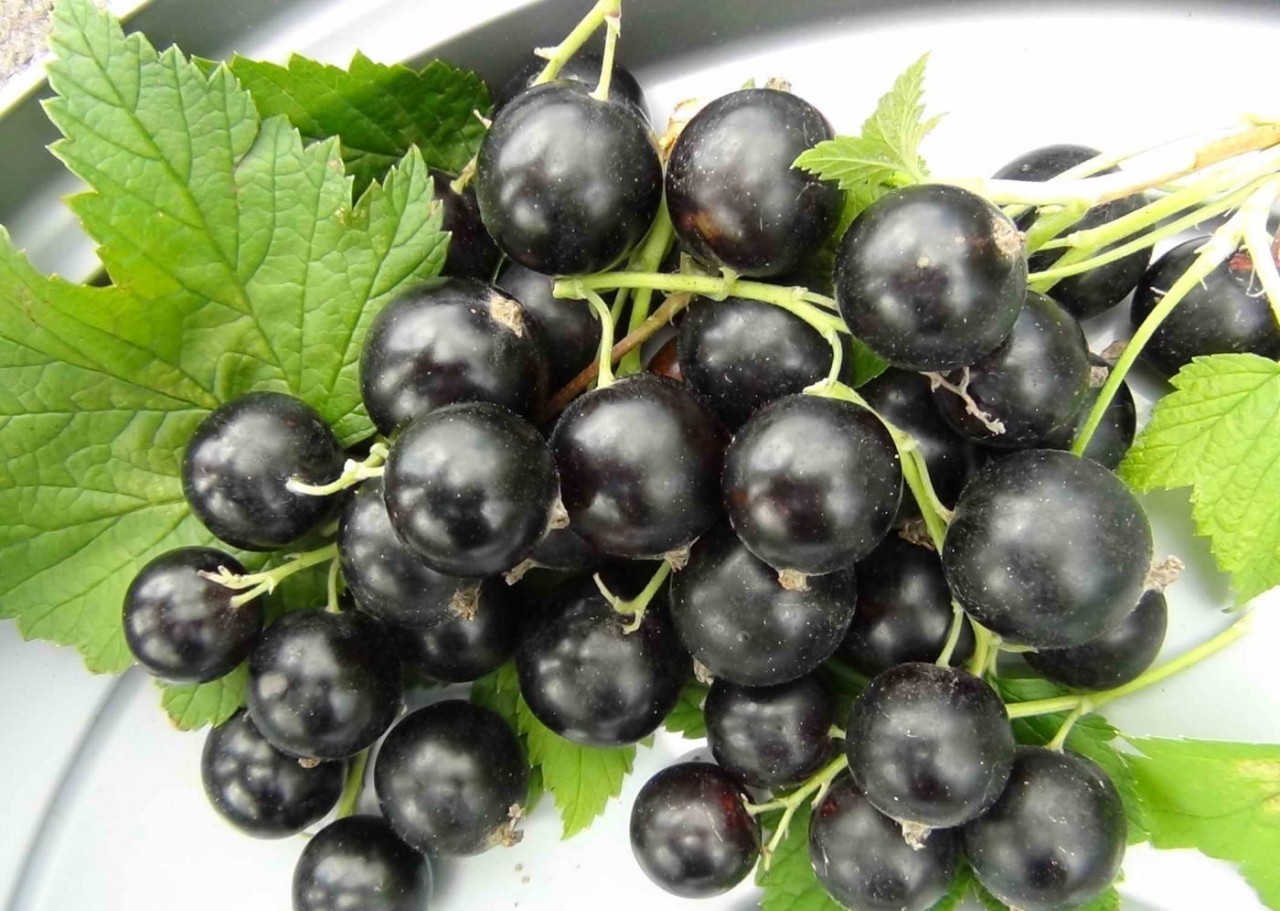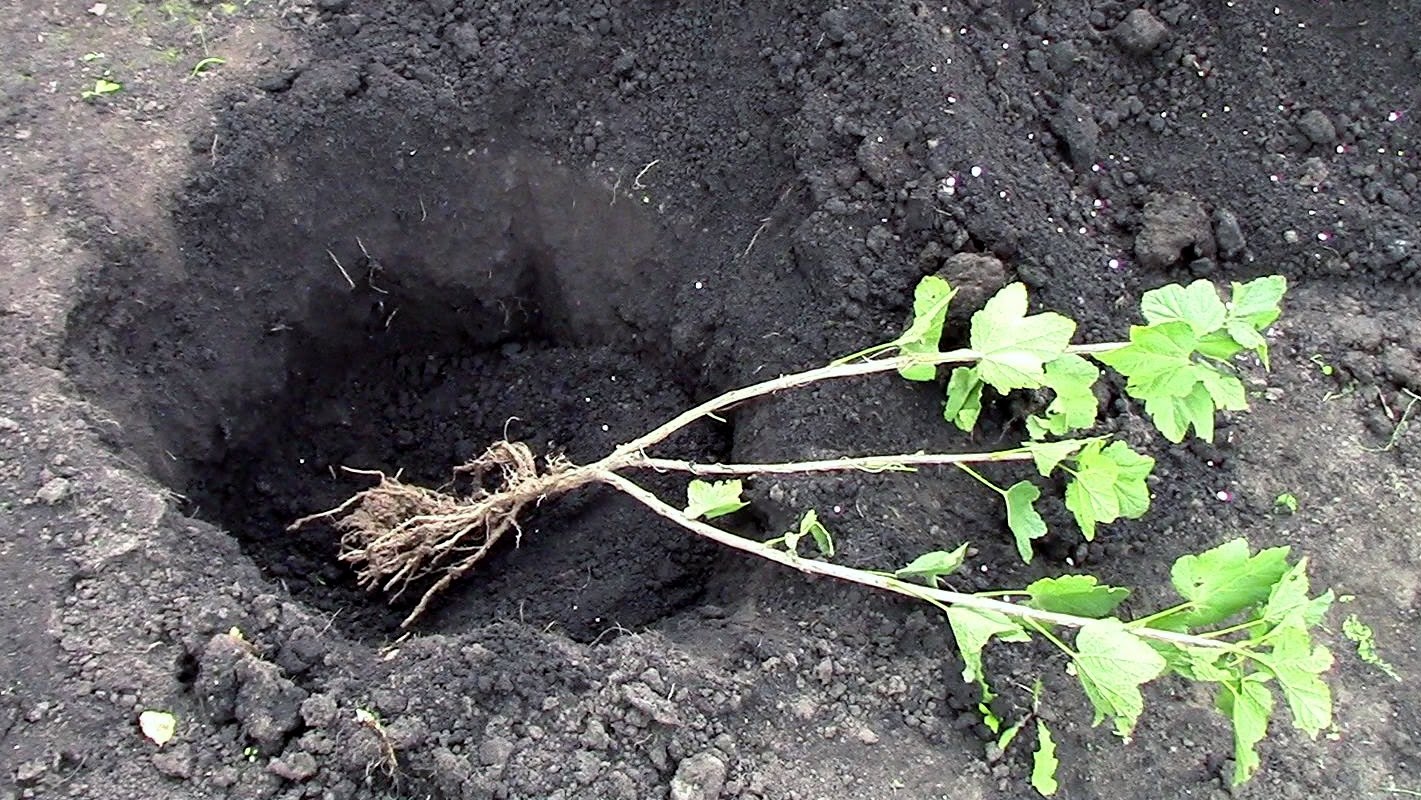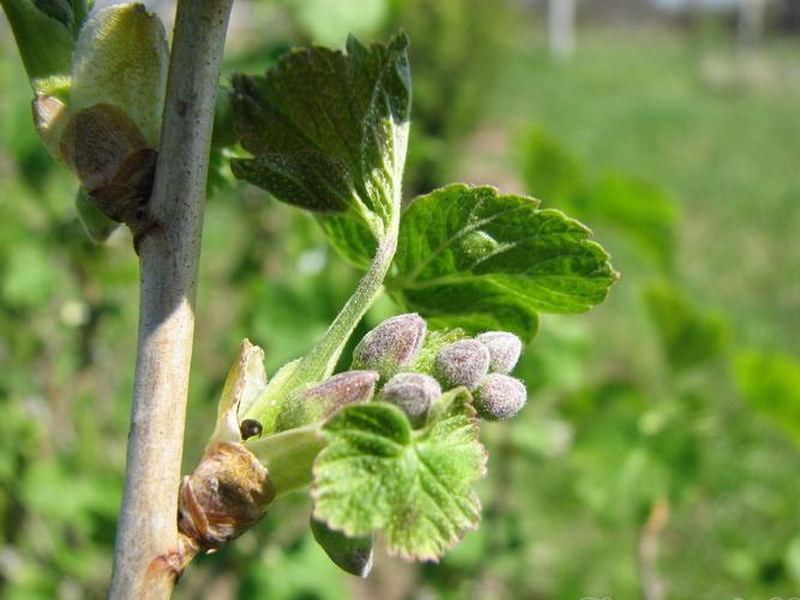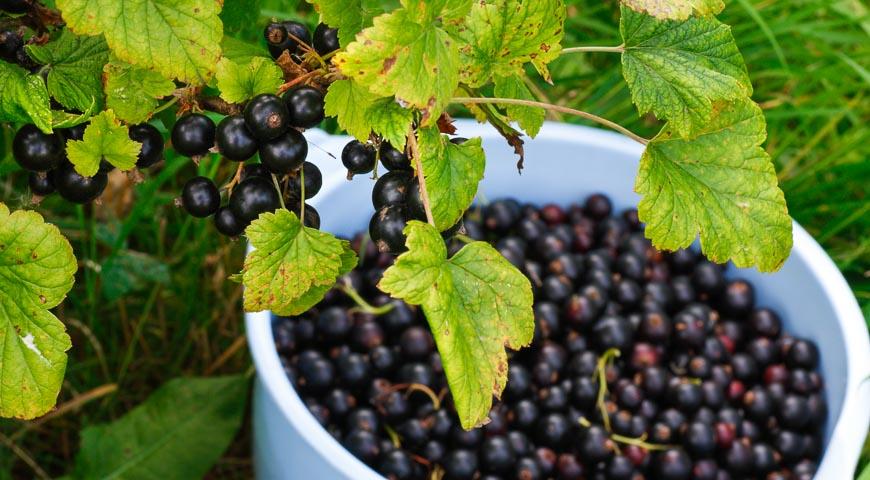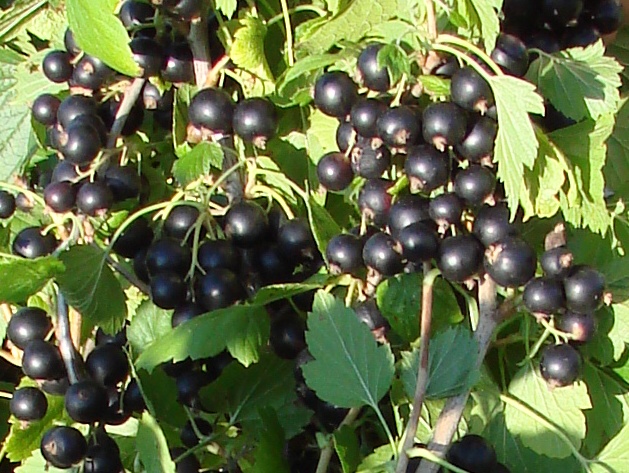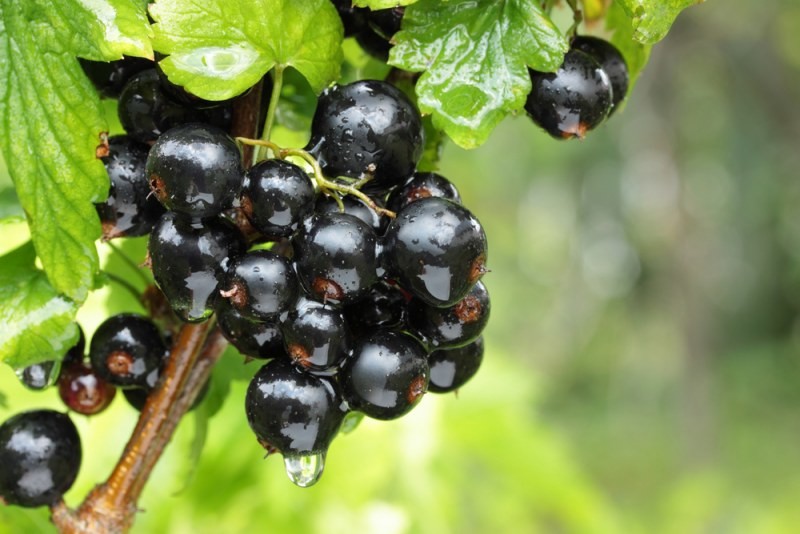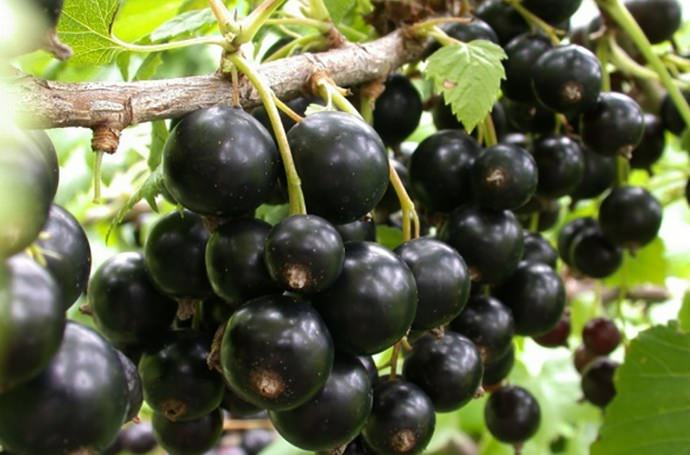Content:
Black currant Gulliver was bred at the turn of the 20th and 21st centuries by domestic breeders. After the variety was included in the Plant Registry in 2000, Gulliver quickly gained popularity.
Description and characteristics of the variety
Since the black currant Gulliver is an actively growing variety, it is strongly recommended to allocate more space for it on the garden plot.
The branches of the plant are green or delicate olive in color. Vigorous shrub, with a crown of medium density, slightly spreading. The branches are usually quite thick. The currant blooms with medium-sized red-violet flowers, collected in a brush. One cluster usually contains from 10 to 20 flowers. The shrub enters fruiting only in the second year after planting in open ground.
The shrub is quite dense, upright. Gulliver currant can be attributed to the early varieties. Its bloom in relatively warm regions begins in May (towards the end of the month).
The fruits of the black currant Gulliver, as described, are round, large, black in color. On average, the weight of each individual berry is more than three grams. Black currant Gulliver tastes sweet and sour. The berry itself is characterized by the elasticity and density of the skin, which makes it suitable for transportation, including over long distances.
The main characteristic is self-fertility. On average, no more than two months pass from the moment when flowering begins until the berries are fully ripe. The first fruits from the bush can be removed in the middle of summer. The variety is great for eating both fresh and processed. Currant leaves are used to prepare teas, tinctures and pickles for harvesting vegetables for the winter.
Cultivation techniques and care
In order for the described black currant variety to grow better, it needs some care. First of all, we are talking about the timely implementation of procedures such as watering, pruning, fertilizing and feeding.
Reproduction
Reproduction of Gulliver currants is carried out in three main ways:
- cuttings;
- layering;
- dividing the bush.
Fresh bushes should be planted in the ground in autumn or spring. Although the latter option is practiced, it is still undesirable, since it significantly complicates the process of rooting a seedling.
When dividing the bush in early spring, the base of the currant trunk, from which it is planned to obtain seedlings in the future, should be hilled, and quite high. Closer to autumn or September, the whole bush is dug up. Young shoots are separated from the old stems and planted in a permanent place.
Shrub cuttings involve the use of healthy annual shoots that have not been damaged by anything. A suitable cutting should be at least 7 cm thick and 20 cm long.
Cuttings are planted in pre-dug soil in such a way that at least two buds remain on the surface.Upon completion of the work, the soil is leveled, watered and mulched. Additionally, the cuttings are recommended to be covered with dark plastic. The cuttings can be planted in a permanent place as early as next year.
Most often, in the case of Gulliver currants, propagation by horizontal layers is used. For this purpose, small pits are dug around the shrub chosen as the mother bush, up to 15 cm deep. At the very beginning of spring, annual shoots must be shortened. This will significantly speed up the process of kidney formation. Then the tops of the shoots should be laid in grooves, fixed and sprinkled with earth. The latter should be done in such a way that the tops remain above the ground.
Watering
The high sensitivity of currants to moisture is due to the fact that the root system of this crop is very close to the surface. As a result, if the summer is dry, the planting may dry out. In this regard, it is very important to water the shrub during the period of fruit ripening. Usually this process occurs in June. If this variety of currants is not watered enough, the berries will inevitably crumble and become very sour.
Top dressing
The Gulliver variety requires feeding annually. If, for some reason, there is no opportunity to apply fertilizer every season, it is permissible to reduce the fertilization to once every two years. If during planting a sufficient amount of fertilizer was applied, you can forget about feeding the plant for a couple of years.
Complex fertilizers for shrubs are optimal for feeding the Gulliver variety. Better to choose liquid options. The mixture, which should be dissolved in water according to the instructions on the package before use, is better absorbed by the soil.
Pruning
Since the Gulliver currant has a very spreading crown, it will not be possible to do without periodic pruning of the shrub. Moreover, young shoots are formed at a very high speed. Old, diseased and weak branches are subject to removal. The shrub should be cut either at the very beginning of spring (when the buds have not yet blossomed), or in late spring (before frost, but after the last harvest).
Protect against diseases and harmful insects
Long-term practice clearly demonstrates the fact that with full adherence to agricultural technology, the Gulliver currant is practically not susceptible to most diseases. In particular, the shrub is highly resistant to diseases such as anthracnose, rust and powdery mildew.
However, prevention should be done without fail. For this purpose, drugs such as Fitosporin and Fundazol are well suited.
If this or that disease is nevertheless detected, it is permissible to carry out additional processing.
Black currants, regardless of the variety, are often attacked by ticks, caterpillars, butterflies, and also aphids. For protection from insects, the drug Karbofos is optimal. It should be used in early spring and late autumn.
Advantages and disadvantages of the variety
Summarizing the above, the following undoubted advantages of the Gulliver variety can be distinguished:
- winter hardiness;
- drought resistance;
- high productivity;
- shade tolerance;
- self-pollination;
- resistance to common diseases;
- high taste;
- unpretentious care.
Compared to other varieties, Gulliver ripens a little earlier. As a result, when growing a crop in warm climatic conditions during one season, you can get two full harvests.
Despite the fact that experts classify Gulliver currants as unpretentious varieties, we are not talking about a complete lack of care. You cannot plant a plant, forget about it and get a decent harvest in the fall. To have a lot of berries, and they remain tasty, you cannot do without some care. In order for black currant to produce larger berries, it is recommended to plant several different varieties in one place that differ in their characteristics. As a result, the plants will be re-pollinated, which will positively affect the quality characteristics of the crop. Despite the fact that the Gulliver currant, like most other varieties, is self-pollinated, in the process of cross-pollination between varieties, a larger number of ovaries appear.
Black currant is a popular culture among domestic gardeners. Probably, you cannot find a single garden plot on which it was planted. This is due not only to the ease of caring for the plant, but also to the excellent taste and beneficial properties of the berry. As you know, black currant is a real storehouse of vitamin C.
The Gulliver variety is among the highly demanded varieties. It is almost guaranteed to give a good harvest, even with minimal care for the shrubs.
